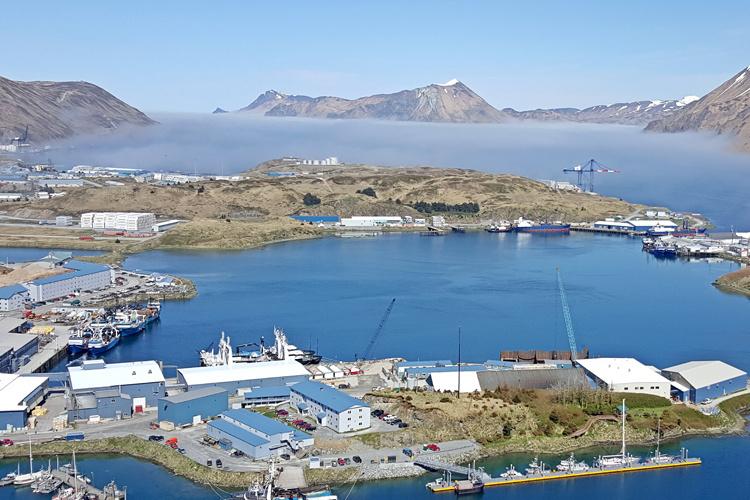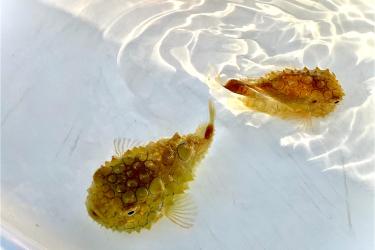The weather in Dutch Harbor, Alaska, is a frequent topic of visitors and locals alike.
During the summer, when daylight averages around 16 hours, changes in the daily weather are apparent.
You might wake up to a day full of sunshine with hardly a cloud in the sky. But, within just a couple of hours, thick fog or clouds may roll in, hiding all evidence that the sun was ever present.
And sometimes you can see different weather patterns just by rotating around the island, as is illustrated by the six (cropped) photos below (click on each one to see the full image).

Dutch Harbor, Alaska, Facing North.

Dutch Harbor, Alaska, Facing East.

Dutch Harbor, Alaska, Facing South.

Dutch Harbor, Alaska, Facing West.

Dutch Harbor, Alaska, Facing Northwest.
Low ceilings of fog and unstable winds can prevent planes from landing into Dutch Harbor. Melanie Paquin (NOAA Fisheries) was unable to leave the island due to weather, so we invited her and Alyssa Pourmonir (NOAA Office of Marine & Aviation Operations) to visit our crab growth study site


